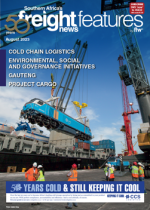The development of transport infrastructure has emerged as a crucial component of the spatial transformation strategy in Gauteng, playing a pivotal role in enhancing mobility and connectivity across the extensive provincial road network spanning over 5 000 kilometres. Recognising the significance of a well-designed and efficiently managed transportation system, authorities are prioritising infrastructure development to facilitate economic growth and improve accessibility. According to the Gauteng Department of Roads and Transport, 18 major arterial roads are being built or upgraded to support the various special economic zones (SEZs) in the province as part of ongoing efforts to facilitate seamless mobility and unlock economic opportunities. In May this year, MEC of Roads and Transport, Kedibone Diale-Tlabela, committed to completing the construction of six roads by the end of the current financial year. This includes the K69 Solomon Mahlangu Drive in Mamelodi, the P241 in Lenasia, the D483 in Cullinan, the K174 Vaal River City Interchange in Vanderbijilpark, the K73 Allandale Road in Midrand, and the K46 William Nicol Drive in Diepsloot.This comes as the department allocated some R2 billion of its current budget to infrastructure to fast-track the planning, design, construction and maintenance of road infrastructure projects.One of the major issues in the country when it comes to road maintenance has been the responsibilities split across three spheres of government. The MEC and her department have acknowledged that Gauteng residents are less interested in whether the road belongs to national government, provincial government or a municipality. “All they want to see is that the roads are maintained, grass is cut and potholes are fixed in Gauteng,” she said. With this in mind, the Gauteng government has concluded MoUs with municipalities across the province which will allow the province to intervene in municipalities. According to the department, Gauteng, as a dynamic economic hub and home to numerous urban centres, faces the challenge of addressing spatial inequalities while accommodating the increasing demands of its population. The strategic development of transport infrastructure serves as a catalyst for spatial transformation, bringing about equitable access to economic opportunities, services, and amenities throughout the region. Investments in transport infrastructure are therefore aimed at reducing travel times, congestion, and reliance on private vehicles, while simultaneously promoting sustainable modes of transportation. By expanding and upgrading the provincial road network, Gauteng aims to improve connectivity between townships, suburbs, and business districts, thus fostering more integrated and cohesive urban environments.Efforts are also under way to update the Integrated Transport Master Plan (ITMP25) that will redefine Gauteng’s transport sector for the next 25 years – a process that is expected to be concluded in the next 18 months.

